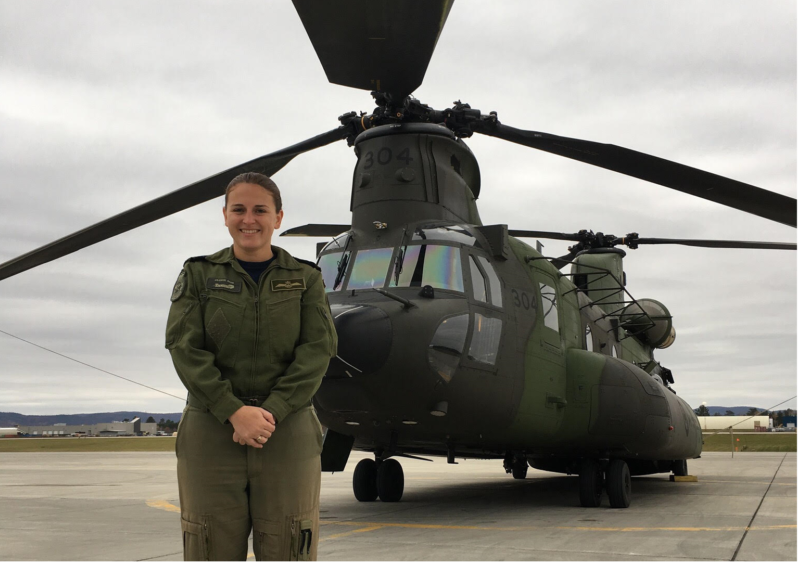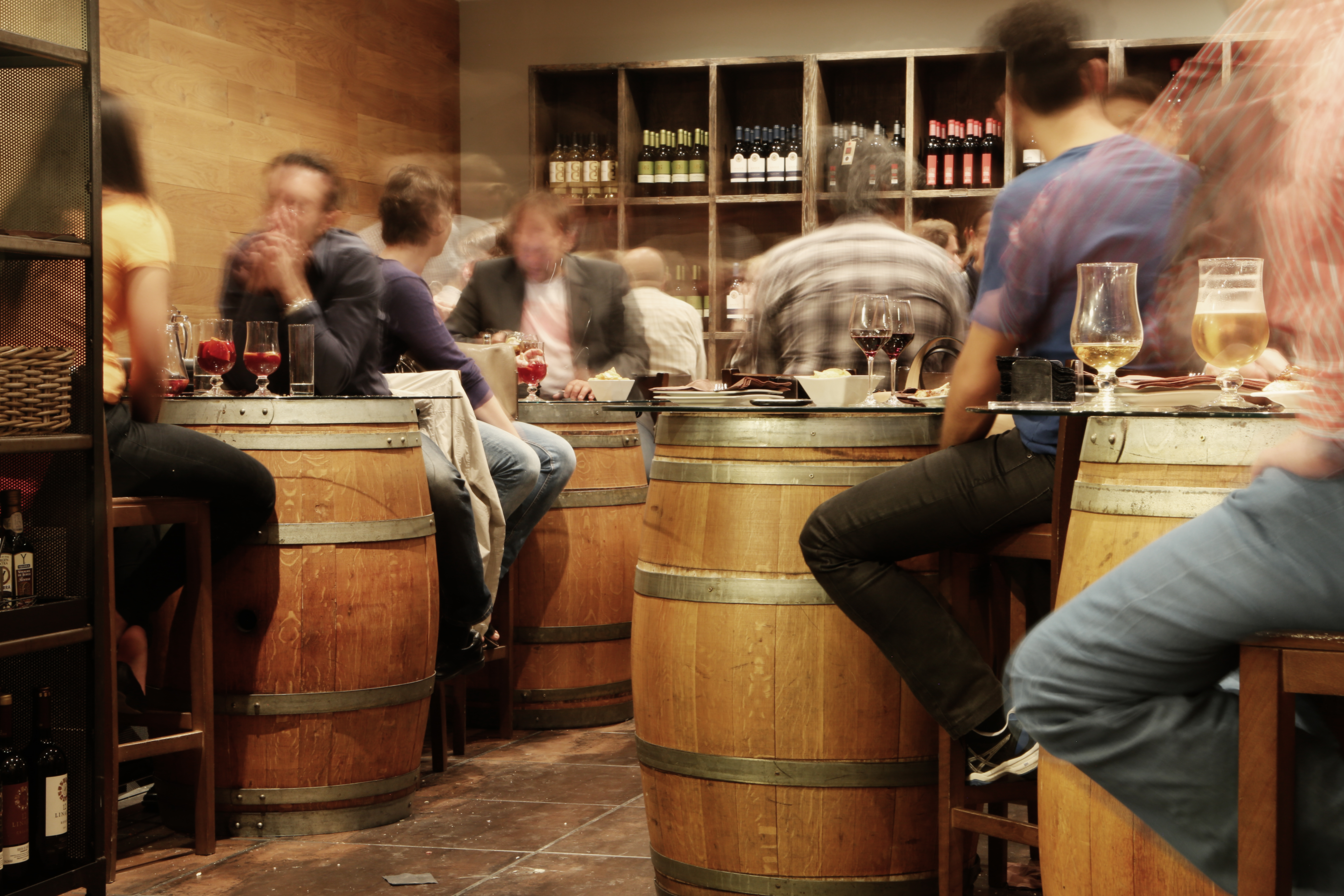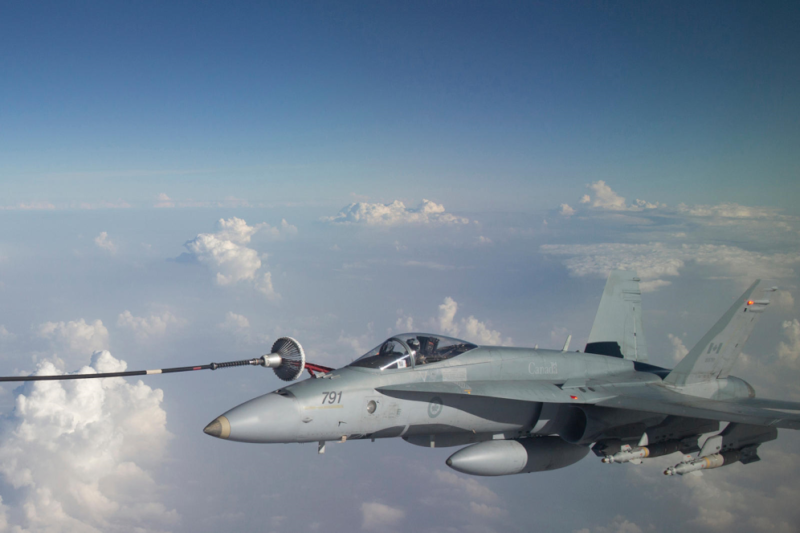Jacqueline Ruis fell in love with flying at a young age. In grade 8, she decided she would become a military helicopter pilot. Now 26 years old, Captain Ruis is the first woman to qualify on and currently fly the RCAF’s Chinook-147F. I sat down with her to discuss her formative years, what it takes to earn pilot wings, and what it means to call a 28,000 lbs tandem-rotor helicopter her office.
Early years
As a child growing up in Surrey, B.C., Capt. Ruis’ family owned a Cessna 172. ‘I was 9 when we started flying. I couldn’t reach the pedals at the time, but my step-father got me on the pilot route’. While she credits her step-father for her love of flying, she found her way to the military through her experience in the Air Cadet program.
‘When I was about 12, my step dad and I volunteered at the Canadian Museum of Flight in Langley, B.C. We were driving there one day and I saw cadets parading on the tarmac. They were all in unison and I thought, ‘Wow, I want to do that’. When I was 14, we moved to Ottawa and I joined the Air Cadets, 632 Phoenix Squadron based in Orleans. I was very successful throughout the Air Cadet program and left at the age of 17 as the Deputy Wing Commander’.
The Paladin life
After graduating from high school, Ruis knew there was only one university for her: the Royal Military College of Canada (RMC). Officer Cadets attending RMC are trained in four pillars: academics, military, athletics, and bilingualism. Capt. Ruis excelled in all four. While pursuing a psychology degree from 2008 to 2012, she also led the fencing team as captain, participated in cheerleading, and highland dancing. Over the summers, she completed Second Language Training. ‘By the end of my time at RMC, I was the Cadet A Division Commander, so I had 307 cadets under me (approximately a third of the College). I got a lot out of the school’.
She describes graduating from RMC as one the proudest moments in her career to date. ‘Not only did I always want to go to RMC, but it’s not easy so it was a big accomplishment. […] Graduating felt like the completion of a chapter of my life and I was now moving on to the next’.
The next chapter of her career would see her return to her true passion: flying. This time around however, she could reach the pedals.
Onwards and upwards
Pilot training in the RCAF is divided into three phases each comprising classroom, flight simulator and in-flight lessons. During Phase 1, candidates head to Portage, Manitoba, for two and a half months where they take to the skies in the Grob 2. From there, most pilots in training are posted to Moose Jaw, Saskatchewan, to complete the eight month Phase 2 course during which time they fly the Harvard II, a turboprop trainer which Ruis describes as ‘really fun to fly’.
Towards the end of Phase 2, depending on performance, preference, and CF requirements, candidates are selected to continue onto Phase 3 where they specialize in either rotary wing (helicopters), multi-engine, or fast jets. Upon successful completion of Phase 3, candidates finally obtain their pilot wings.
CF Pilots can operate a variety of aircrafts in a variety of roles. For Capt Ruis., the decision to purse rotary wing was an easy one. ‘I started finding out more about Tactical Helicopters and what’s involved in that job and that really spoke to me.’
‘With helicopters you see the difference you’re making. You have troops in the back and you’re taking them to where they need to go. You see them getting off and they get to do their job and when they’re done you go and pick them up. When you’re flying low and fast, you get to really be a part of it and that’s exciting’.
After four years in the training system (including wait times), Ruis finally received her wings in December 2014. She was then posted to 450 Tactical Helicopter Squadron (THS) in Petawawa, Ontario, to begin Operational Training Flight (OTF) on the Chinook.
Train, prepare, repeat
Training doesn’t stop once pilots receive their wings or graduate from OTF. ‘You’re always learning, and always being evaluated. There’s never an ‘end’, which is good because it keeps us on our toes. If you stop learning, then you should stop flying’. For Ruis however, the constant evaluations are worth it. ‘I get to do what I love and fly almost everyday. It’s rewarding and it’s fun.’
While the Chinooks have yet to deploy on any operations, they have participated in numerous exercises on the road to assuming high readiness in the summer of 2017. Capt. Ruis explains that ‘right now we’ve been doing a lot of training and preparing to do our jobs overseas or wherever they decide to send us’.
Ruis graduated from her Chinook training in early August and has steadily been gaining experience racking up 135 flight hours since arriving at 450 THS. Shortly after graduating, she was able to fly during Stalwart Guardian and Collaborative Spirit, two exercises held in Petawawa. Stalwart Guardian marked her first flight outside of the training system. ‘I had 30 guys in the back which was awesome. I had a purpose and that was a great feeling after so many years of being evaluated and going through the training system’.
What’s the coolest thing she’s ever done as a pilot? ‘On the second day of Stalwart Guardian, we had a tasking to bring 32 guys over to a waterfall and we did a pinnacle on a waterfall. A pinnacle is a manoeuver where you just put the aft wheels down but are still flying in the front. 32 guys hopped out, 32 other hopped back on and we just flew away. We did that four times. The scenery was beautiful! That was a pretty cool way to start my flying career outside of the training system.’
‘Oh’, she adds, ‘there was also the time we flew to Trenton and the Minister of National Defence parachuted out of the back of the Chinook I was flying at 10,000 feet. But nothing beats being able to fly my family during this year’s family day at the squadron. They’ve been so supportive of me throughout my life and I’m grateful for that.’
‘Putting your mind to it’
When asked what it means to her to be the first woman to qualify and fly the Chinook-147F, Ruis is quick to point out those who paved the way before her.
‘We had the D models in Afghanistan and I believe there were three Canadian women who flew them over there. What it means to me? I think in 2016 it’s pretty crazy that women are still having firsts’. She is also quick to specify that being the first female to do something is not a check mark off her bucket list. Rather, she says that ‘finally being qualified to be a pilot, whether being male or female, is a huge accomplishment and it means everything to me to be able to do the job I love.’
To other young women thinking of joining the Canadian Forces and embarking on the pilot path, she says this, ‘It’s not easy, be prepared for a challenge. If it’s something you want, put your mind to it and go for it. In this day and age you can do anything you want. The only limitations are those that are in your own mind.’
Photo: Capt. Ruis (2016). Published with permission by Jacqueline Ruis.
Disclaimer: Any views or opinions expressed in articles are solely those of the authors and do not necessarily represent the views of the NATO Association of Canada.




